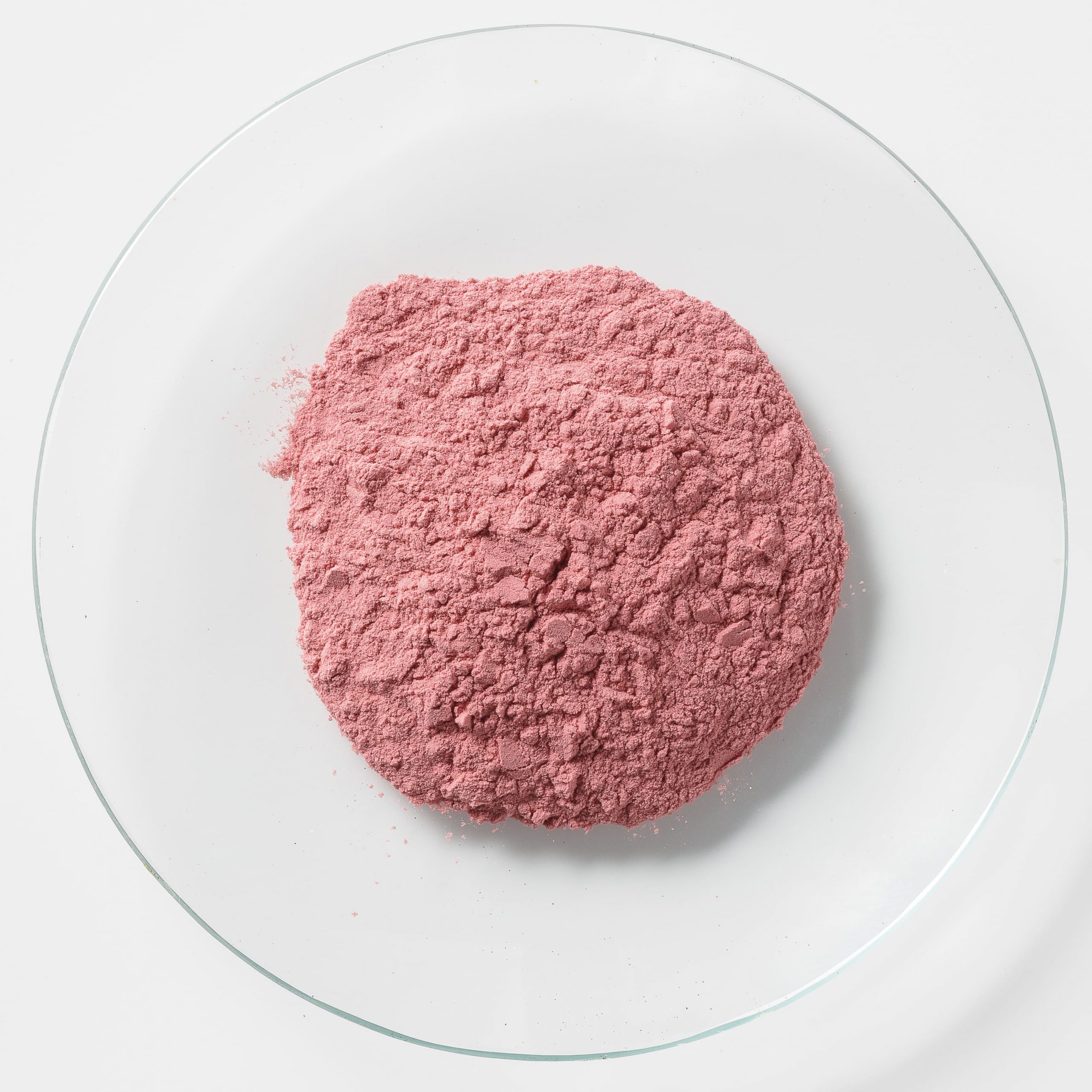Red Yeast Powder K-F
Red Yeast Powder K-F is a functional material with Monacolin K acting as the main active ingredient for cholesterol regulation. Red yeast mold has long been known as a Chinese herbal medicine as well as widely used in Japan as a natural food colouring.
General Information
| Functions | Blood cholesterol lowering effect |
|---|---|
| Form | Powder |
| Solubility | Water insoluble |
| Content | Monacolin K |
| Form of delivery | 1 kg |
| Recommended intake | 70mg~100mg/day |
※The information on this page is intended for people in the health food industry, and does not claim any effects or efficacy of the product.
Table of Contents
1.Development Story
1-1 Red yeast and Monacolin K
1-2 Manufacturing process
2. Trial Data
2-1 Cholesterol and neutral fat levels improvement
2-2 Suppressing liver damage
2-3 Relaxing effect
1.Development Story
- 1-1 Red yeast and Monacolin K
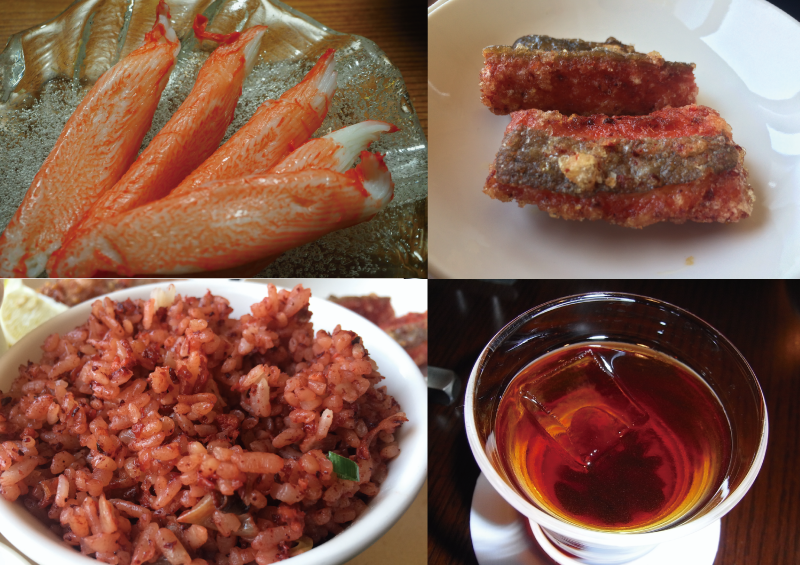
Red yeast (Monascus purpureus) is a type of koji mold that is commonly used in Japan for fermenting miso, soy sauce and sake. Currently, about 20 different species and 70 strains of Monascus aspergillus have been identified. In recent years, the bright red pigment has been isolated from Monascus purpureus, which nowadays is used as a safe and stable food coloring for crab sticks, soy sauce, ham, sausages, and many other foods. Although red yeast and its pigments have been used in fermented foods and beverages for a long time, the research on their usage as functional materials started mainly in Japan by Dr. Akira Endo who developed statins – compounds to regulate cholesterol levels.
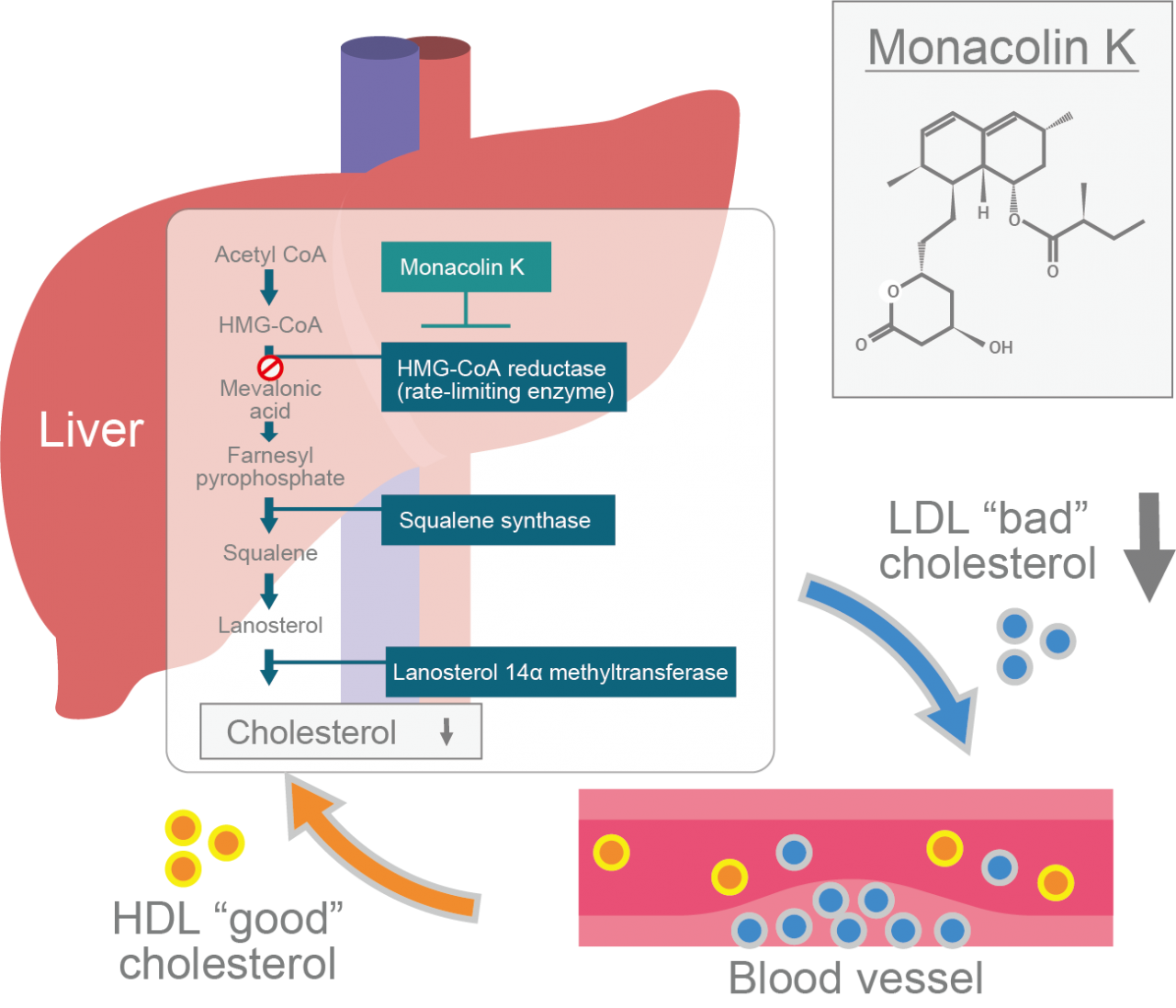
Monacolin K is a characteristic compound produced by red yeast discovered in 1979 from Monascus ruber, a type of beneficial mold Aspergillus oryzae with cholesterol synthesis inhibitory activity. In the following research, compounds such as Monacolin J and Monacolin L were also synthesised. Cholesterol molecules are produced in human liver through the metabolic pathway shown in the figure above. Since Monacolin K molecule has a similar structure, it exerts an antagonistic effect on HMG-CoA reductase and suppresses cholesterol synthesis. As the mechanism of Monacolin K activity includes inhibition of HMG-CoA reductase it is similar to above mention statins. However, Monacolin K is fully natural based and therefore attracts and increasing attention as a functional food material that can mitigate cholesterol levels.
Possible mechanism of action of lowering blood LDL cholesterol is shown in the graph above. First, cholesterol concentration in liver decreases as a result of suppressing cholesterol synthesis → since cholesterol is required for the production of bile acids in the liver the LDL receptor release in liver also increases → LDL molecules transport cholesterol to liver via bloodstream decreasing concentration of “bad” cholesterol.
(*As shown in the figure, LDL proteins mainly carry cholesterol from the liver to blood vessels and tissues, while HDL return it to the liver. If the LDL receptors amount in the liver increases, the amount of LDL cholesterol that comes to the liver will relatively increase as well, and LDL cholesterol levels in blood will decrease.)
- 1-2 Manufacturing process

Red Yeast Powder K-F is an edible food supplement ingredient obtained by liquid culturing Monascus pilosus via Yaegaki Biotechnology’s own culturing technology. After culturing the filtrate is concentrated under reduced pressure, sterilized and dried to produce powder form.
2. Trial Data
- 2-1 Cholesterol and neutral fat levels improvement

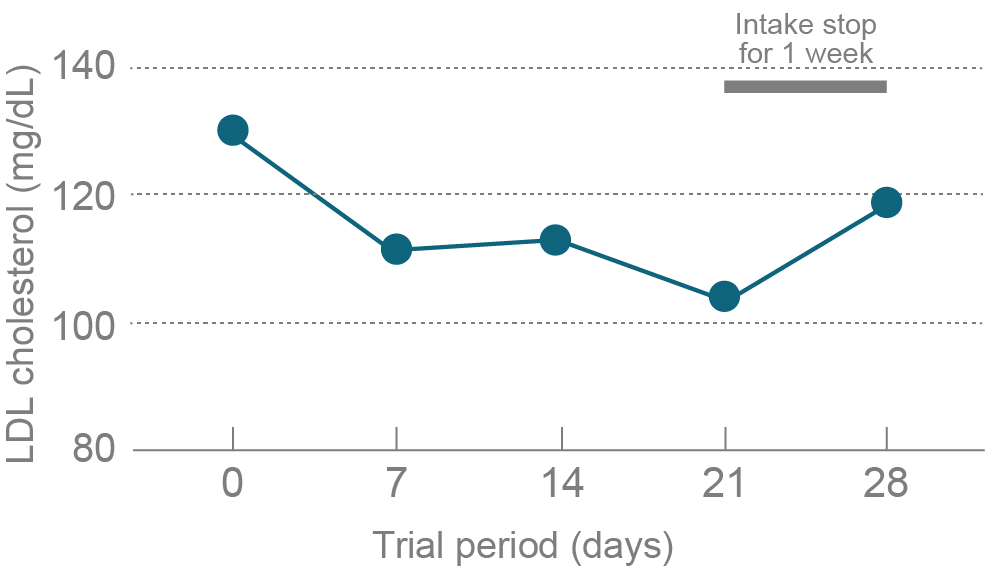
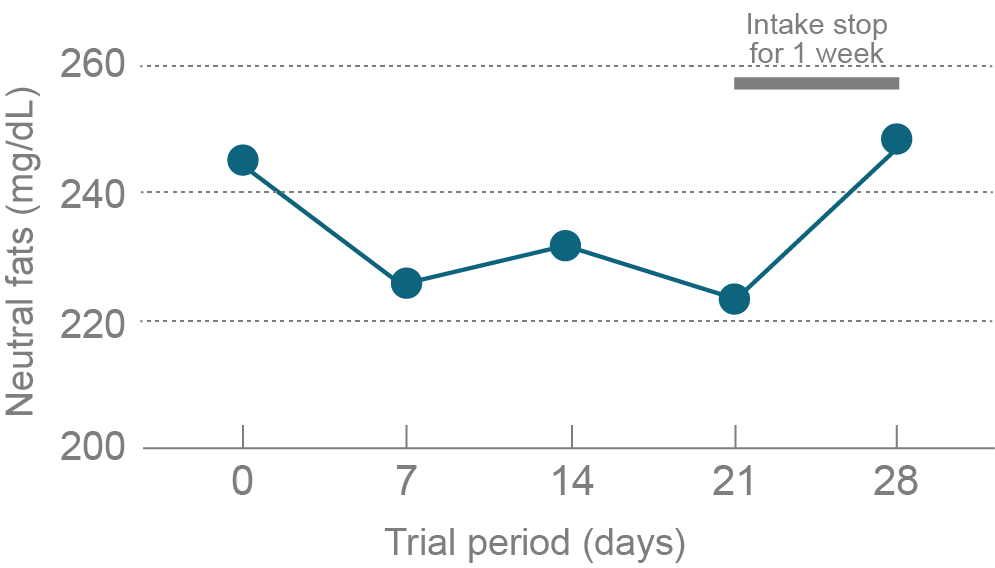
Trial outline
Since Red Yeast Powder K-F was confirmed to have a cholesterol-lowering effect in animal studies, a human intervention study was also conducted. We asked 17 healthy adult males with high cholesterol levels to take tablets containing Red Yeast Powder K-F for 3 weeks, and then stopped taking it for 1 week to investigate possible changes.
| Subjects | Healthy adult men aged from 26 to 56 years (n=17) |
| Samples | Red Yeast Powder K-F 23 mg tablets (3 tablets/day) |
| Period | After taking the test sample for 3 weeks, the the intake was stopped for 1 week |
| Outline | Open-ended study based on before-after comparison. Weekly measurements of total cholesterol in serum, HDL-cholesterol, neutral fats, blood sugar level and blood pressure were performed. |
Trial results
It was confirmed that intake of Red Yeast Powder K-F reduced total cholesterol values approximately by 15%. This is thought to be due to a decrease in LDL “bad” cholesterol and triglyceride levels.
- 2-2 Suppressing liver damage (trials with Red Yeast Liquid 2000)
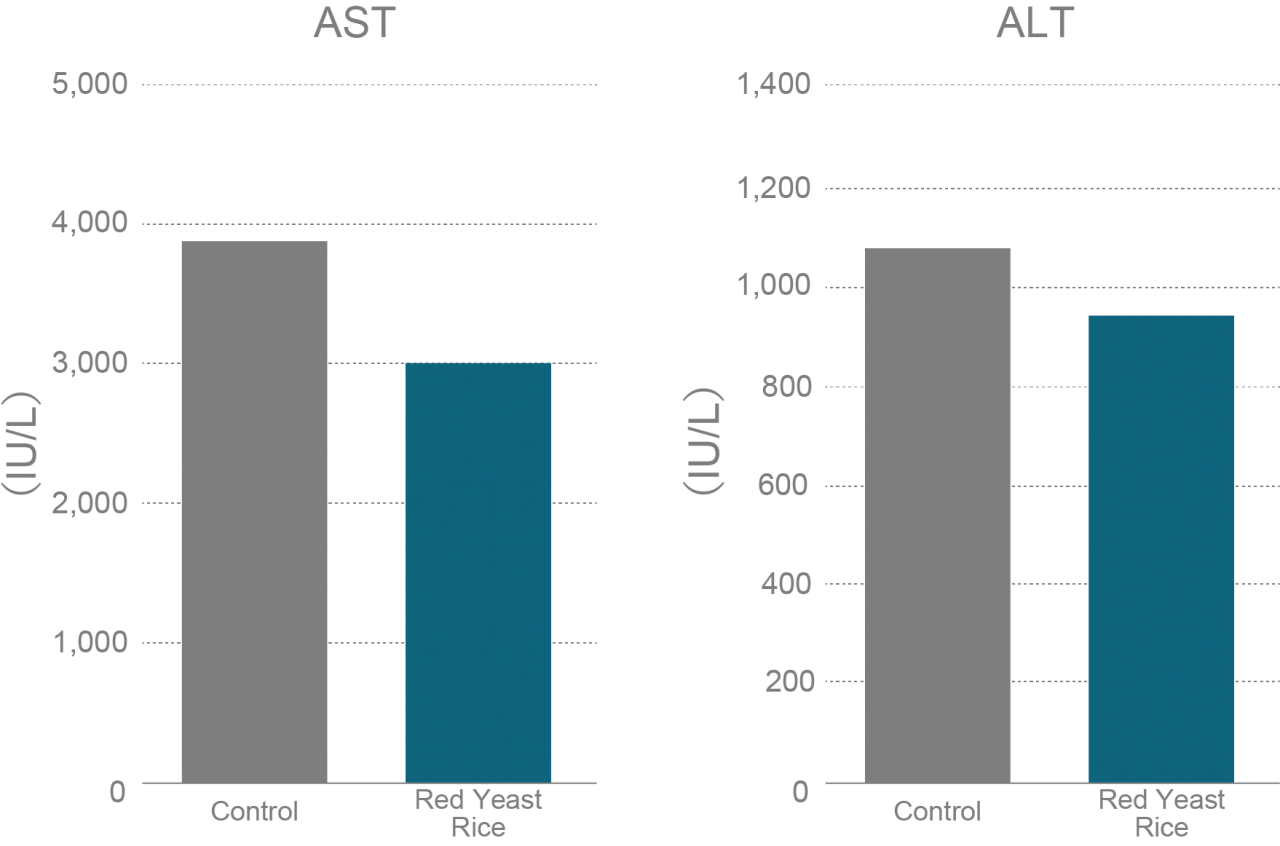
Trial outline
We confirmed an effect of suppressing liver injury as a new functional property of the Red Yeast Rice materials in animal trials. After sample ingestion, carbon tetrachloride (compound that promotes hepatitis) was orally administered to mice and hepatitis markers (AST, ALT) were used to examine the effect of Red Yeast materials on liver damage.
| Subjects | Sprague‐Dawley rats (5 weeks old, n=5) |
| Samples | 0.5 ml of Red Yeast Liquid 2000 (equivalent to 70 mg of Red Yeast Powder K-F) 0.5 ml of water for control group |
| Period | One-time experiment |
| Outline | After overnight fasting rats were orally administered with the Red Yeast Liquid 2000 sample. 1 hour later 0.3 mL of carbon tetrachloride was orally administered, and 17 hours after blood was collected to measure AST and ALT levels. |
Trial results
It was confirmed that oral intake of Red Yeast Liquid 2000 suppressed liver injury in hepatitis model rats.
- 2-3 Relaxing effect
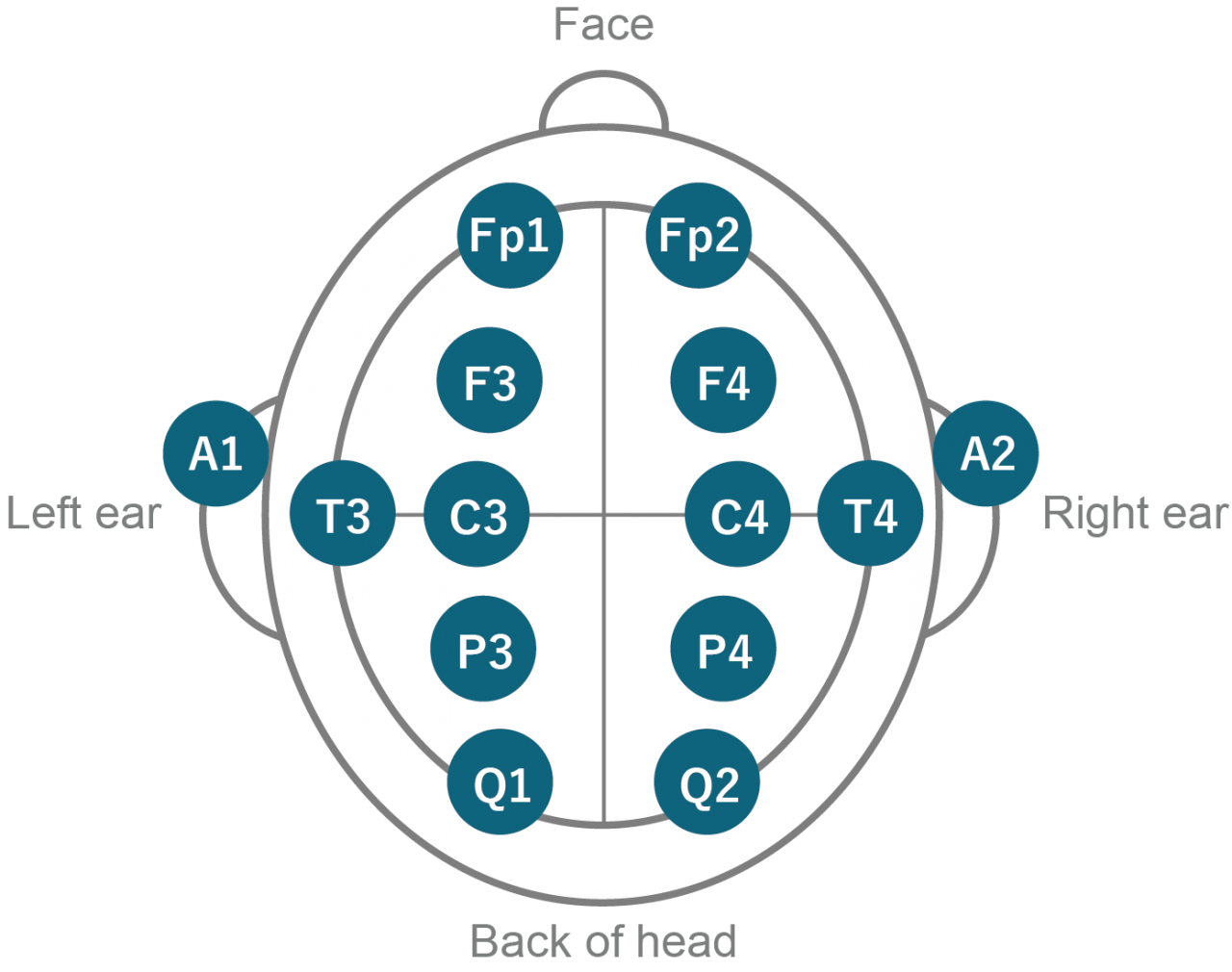
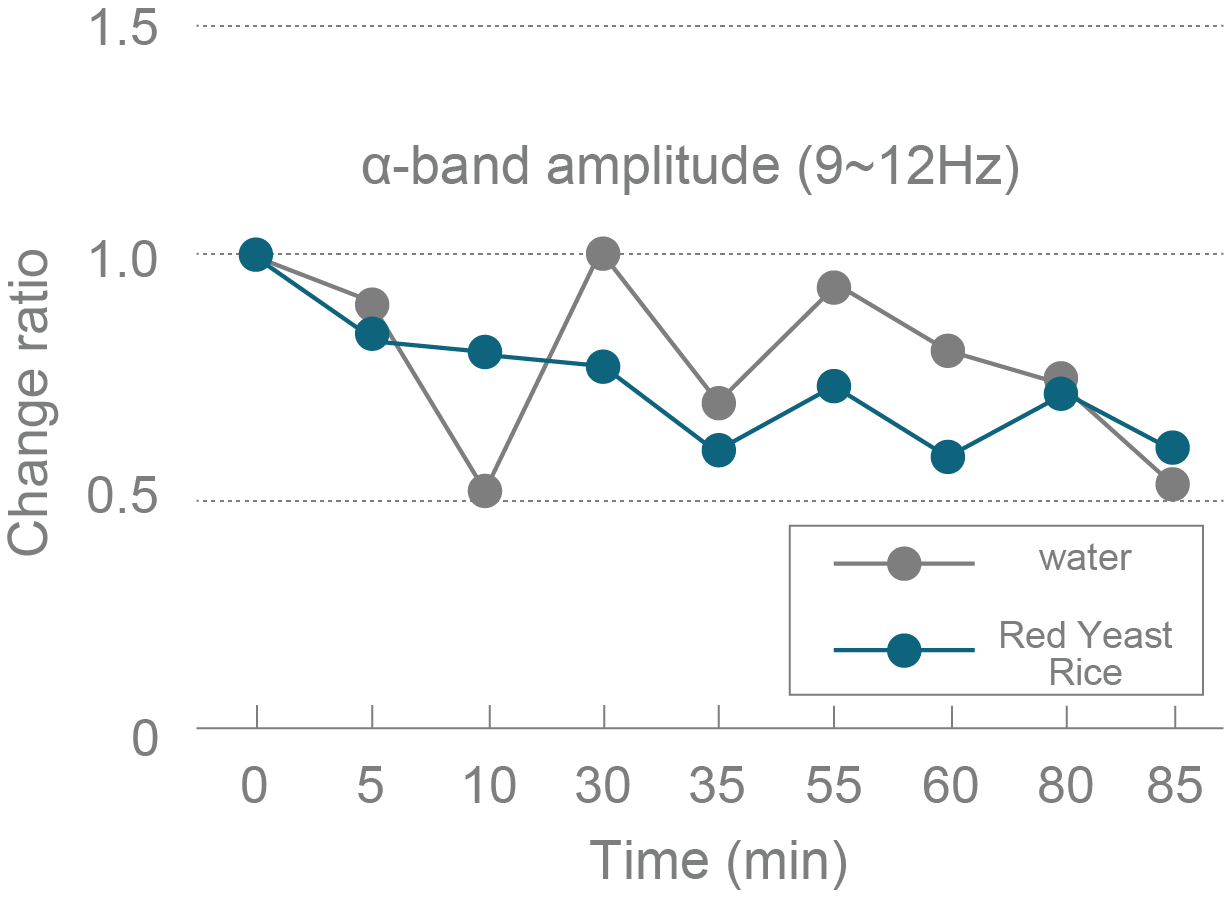
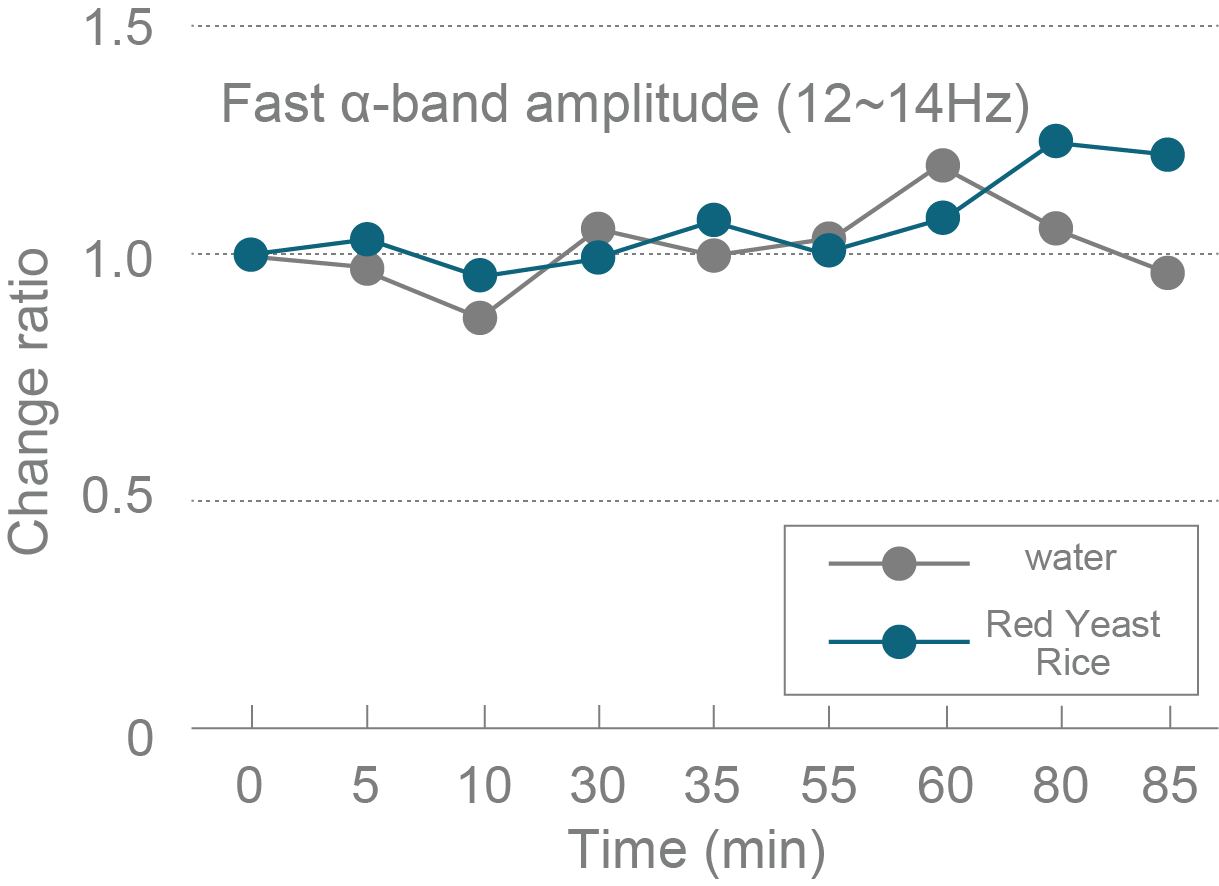
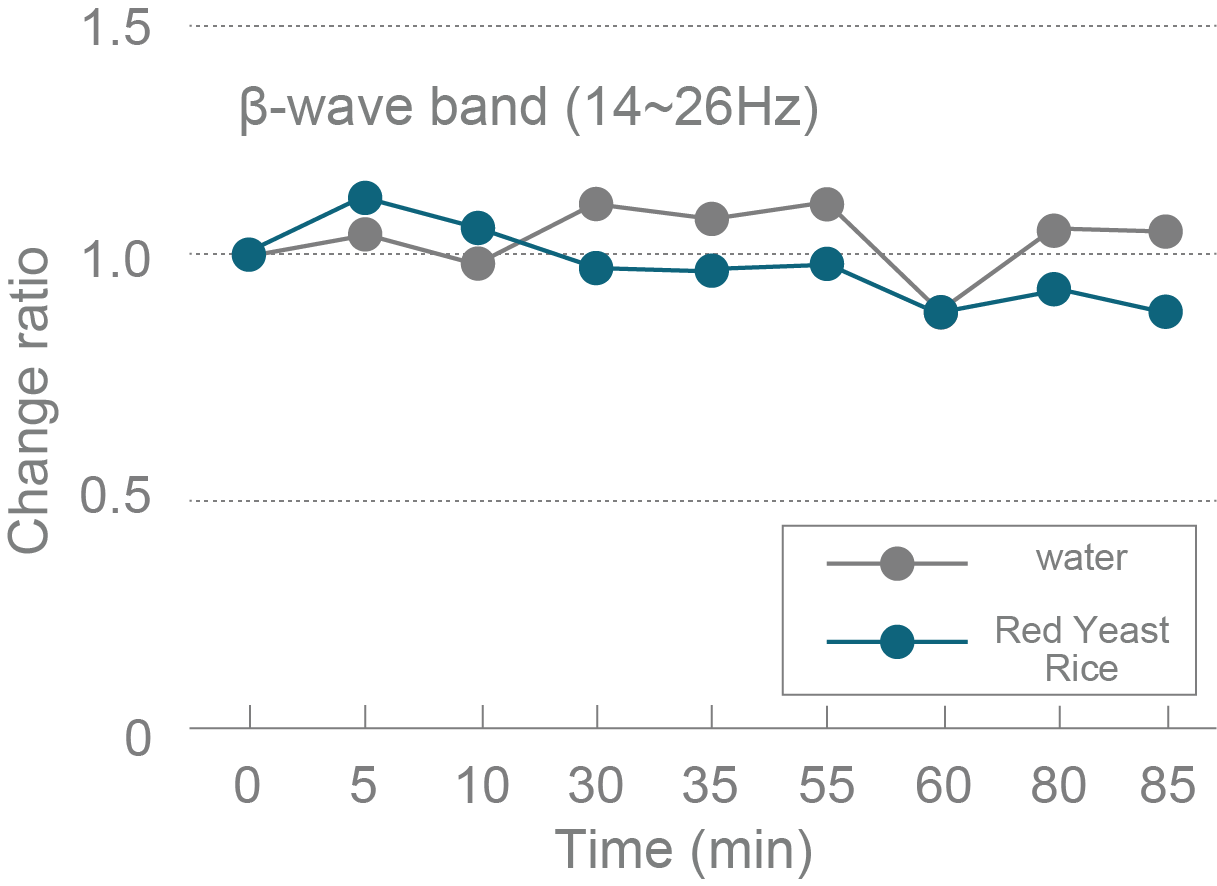
Trial Outline
To test a new possible functionality of red yeast, we performed trial whether it has a mood relaxing effect. We asked healthy female university volunteers to ingest water containing Red Yeast Powder K-F and examined the effects on tension, stress, and relaxation by measuring each band of brain waves.
| Subjects | Healthy female university students (n=3) |
| Samples | 200 ml of Red Yeast Powder K-F (400 mg/200 mL water) 200 ml of water |
| Period | One-time experiment |
| Outline | A placebo-controlled open-label study. After ingesting the sample, brain wave analysis was performed with an electroencephalograph. |
Trial results
The alpha wave mid-alpha band (indicating a relaxed state with the right brain most active) varied widely, and no effect of Red Yeast Powder K-F was observed. The α-wave fast α-band (indicating a slightly relaxed state with a little activity in the right brain) remained high after 80 minutes of the test, while the β-wave band (indicating a state of anxiety, tension or stress with the left brain most active) tended to remain low after 30 minutes of the test with the intake of Red Yeast Powder K-F.
